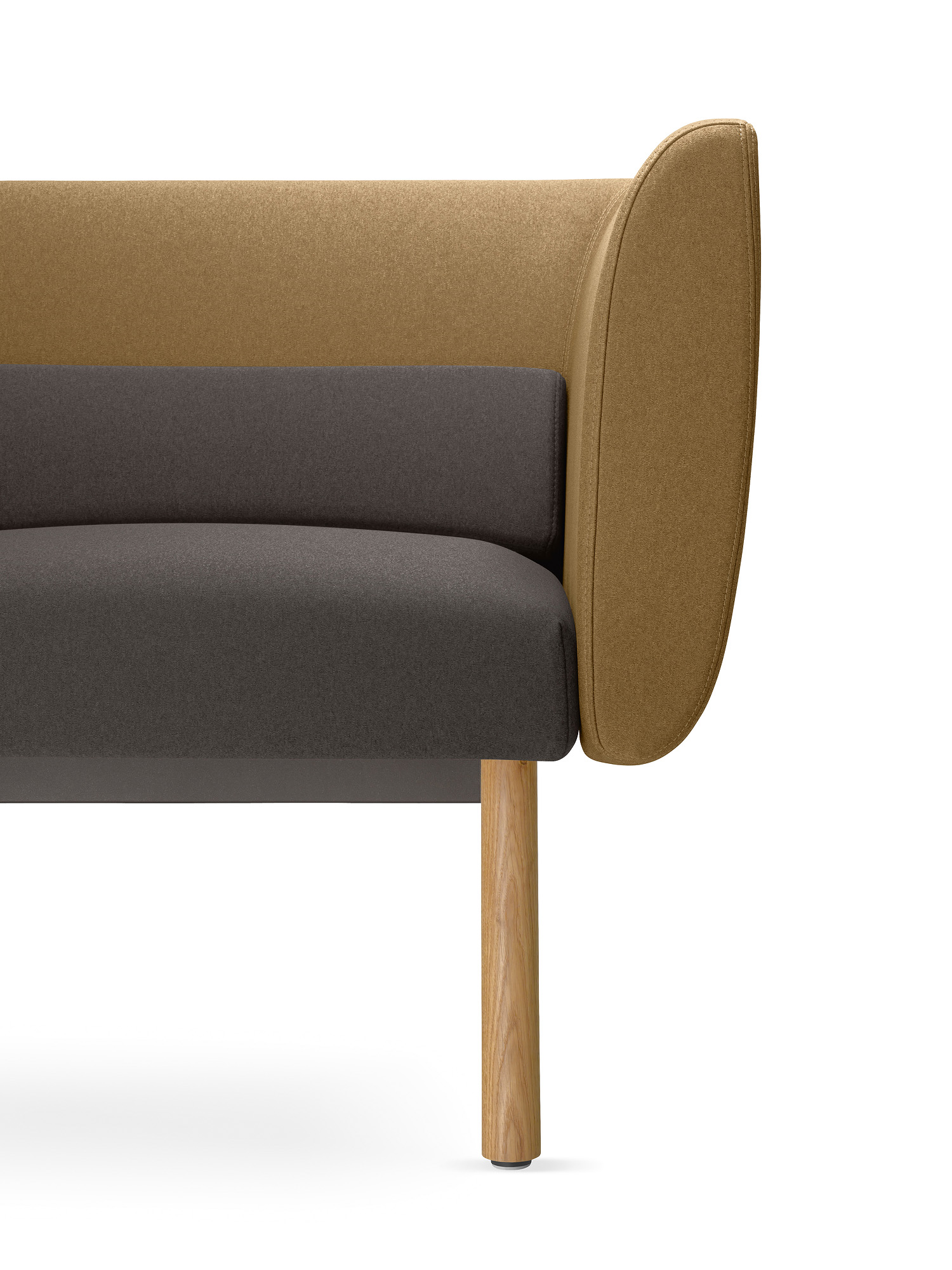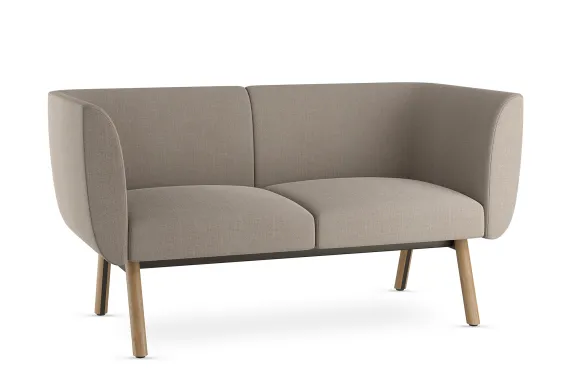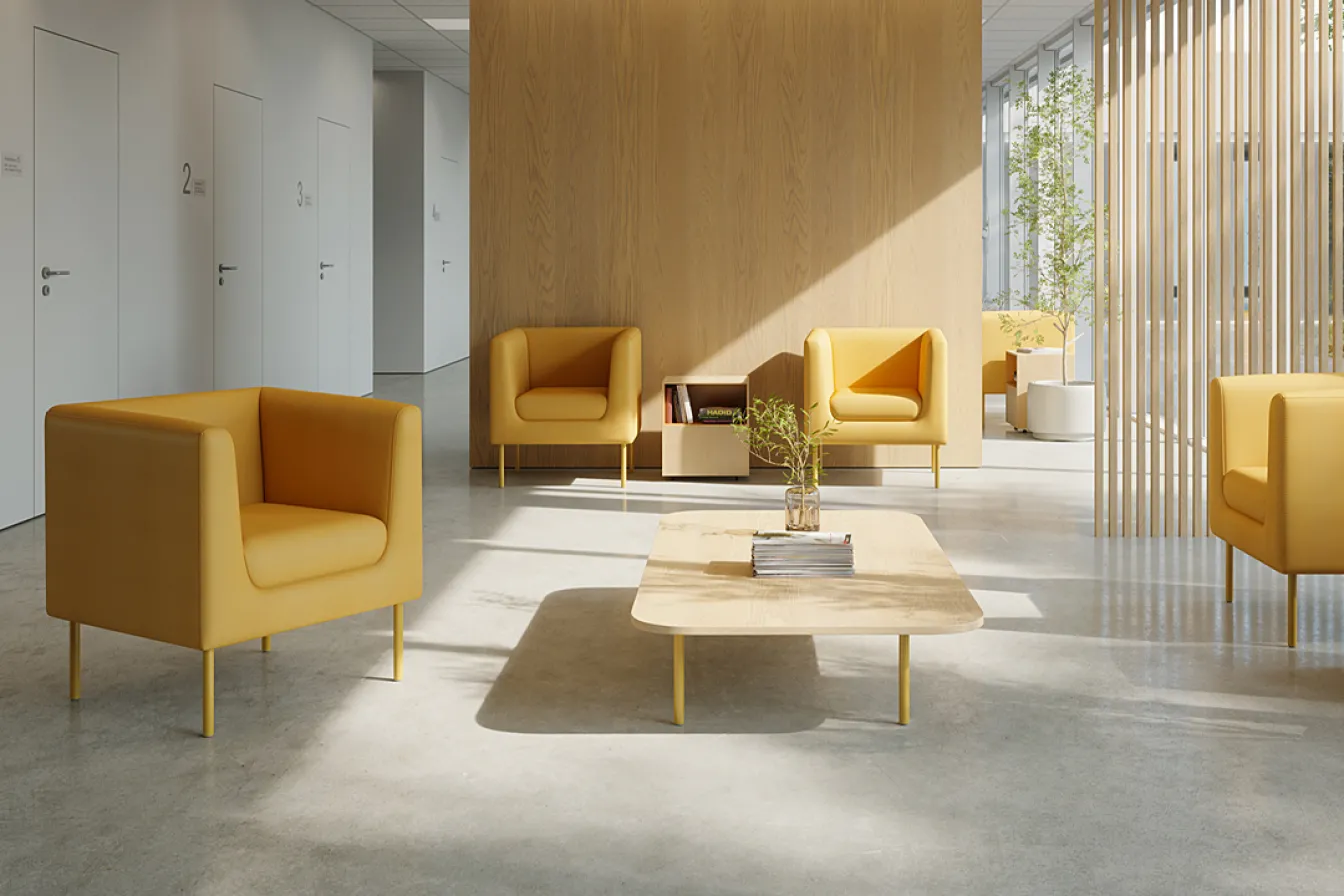The NIDO modular system is now also available with wooden legs
25. 03. 2024
The NIDO modular seating system consists of several parts that can be very easily combined in different ways. Our standard range of products now includes a version of this modular system with oak legs. The steel base of this version is painted bronze, which makes the wooden legs stand out nicely.
As a standard, the NIDO, designed for us by Orlandini Design, Italy, is offered as a one- to three-seat system. Other shapes can easily be combined using our online configurator. You can combine not only the size of the features but also the height of the individual backrests. It is also possible to add built-in wooden tables with oak veneer, lumbar pillows and electric sockets.
With its variability, the NIDO is the perfect creative solution for relaxation zones for companies, hotels and public places.

Gallery
What's new
New Quadra series
Our range has a new addition: the Quadra series. It includes one-, two- and three-seat versions designed with focus on comfort and versatility. Typical features of the Quadra are rectangular shapes with finely rounded edges and slim metal legs, whic...







